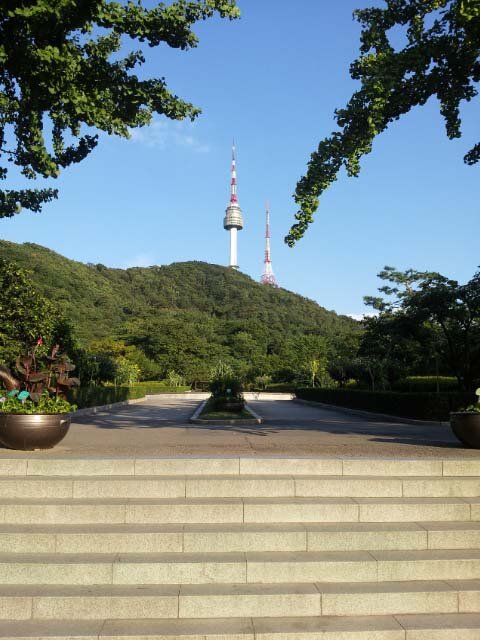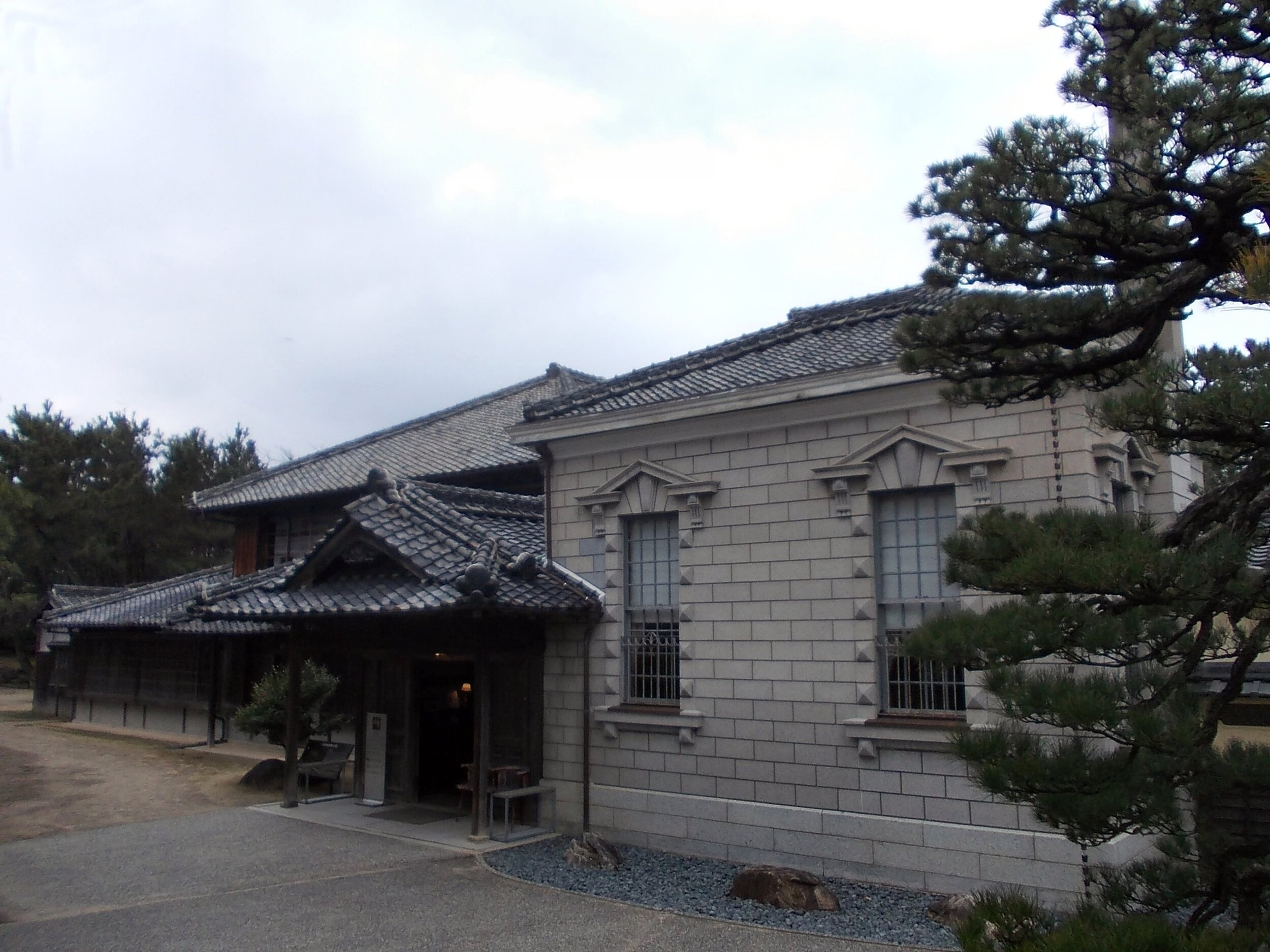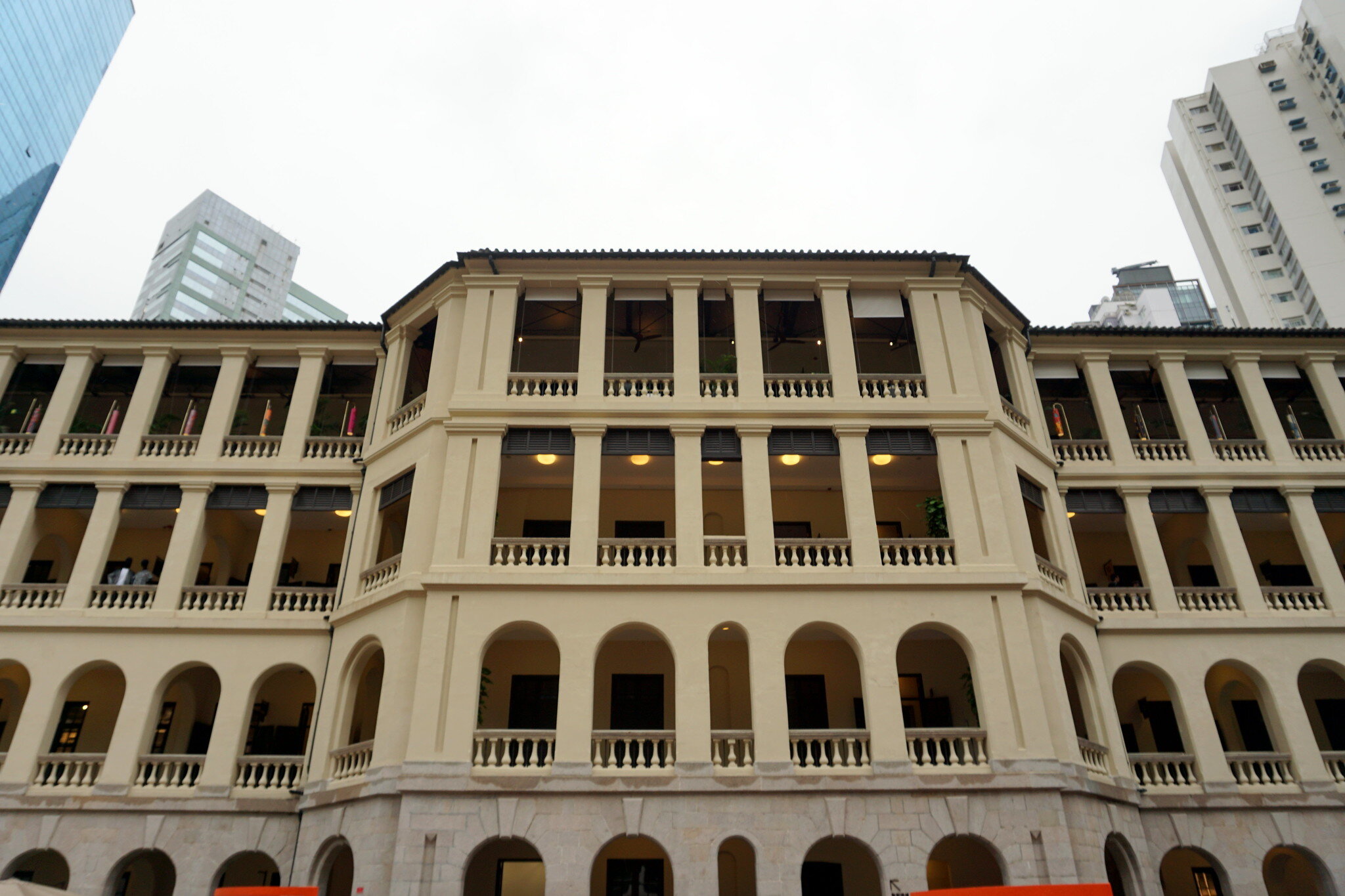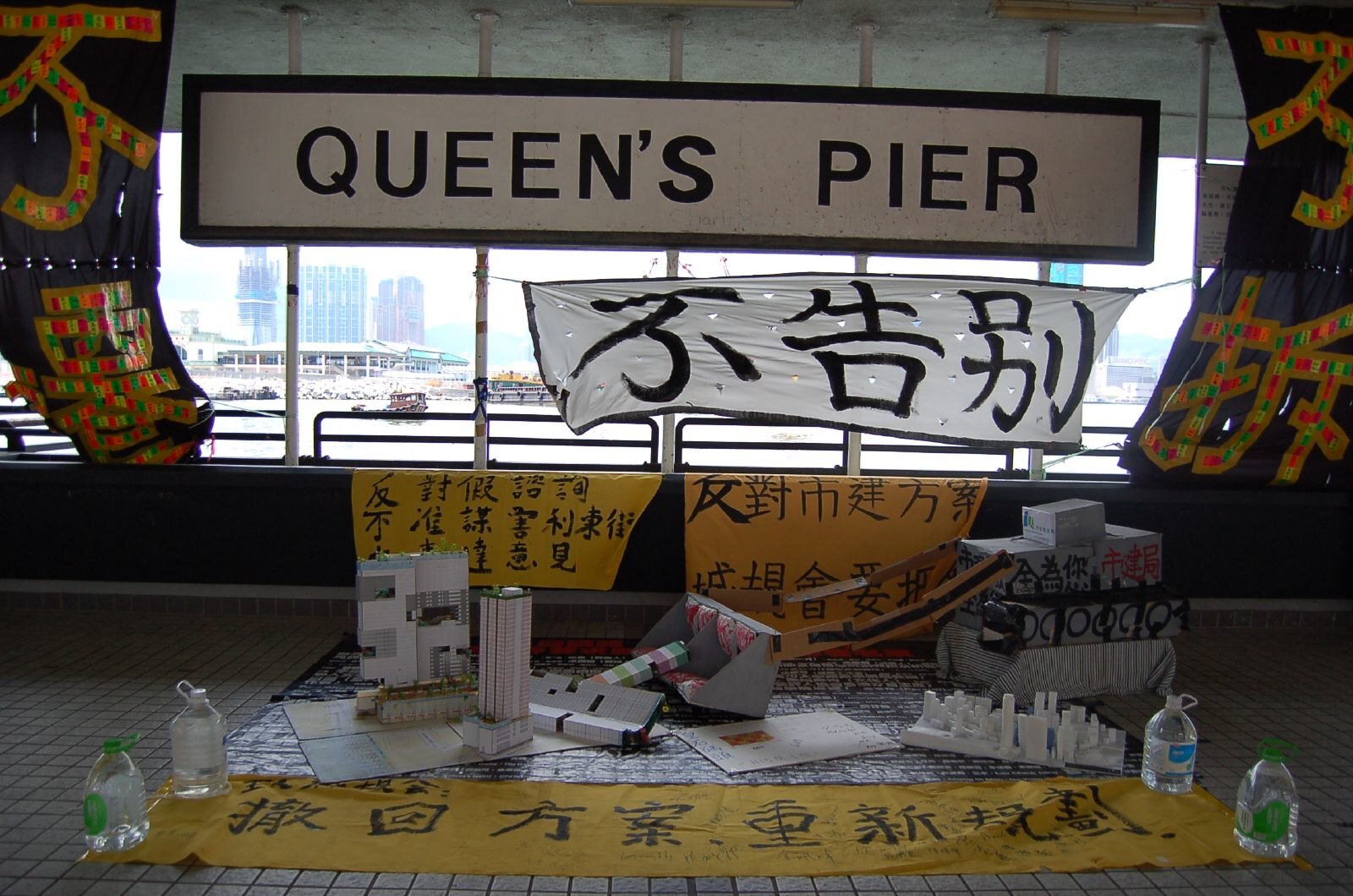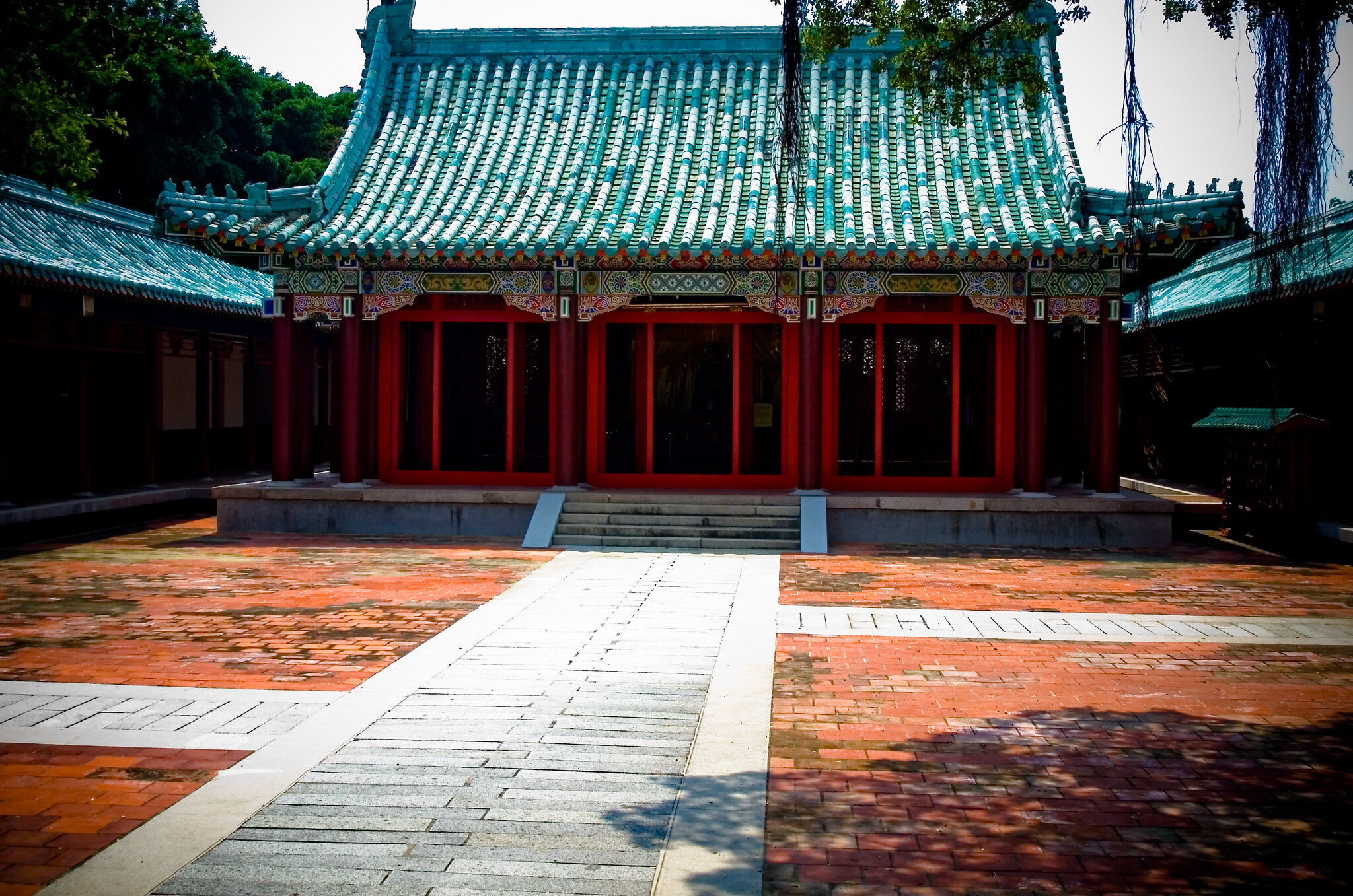Touring Shinto Shrines in Seoul
Emergence of Contestation: 2017
The "dark history" tour along a route on South Mountain in central Seoul aims to showcase the disgraceful history of Japanese colonial rule over Korea and the associated hardships by placing the remains of the Shinto Shrines located along the route in their historical context. Few of the Shrines have been re-purposed as sites of memorialisation, most remain unmarked (aside from in the tour guide materials), and reflect a disconnect in the awareness of Seoul's inhabitants between the spaces in the city they live in and their history.
The Memory and Legacy of shinto Shrine Sites in Seoul: The Geography of Colonial Religious Topoi - John G. Grisafi
Tanba Mangan Kinenkan
Emergence of Contestation: 1989
The Tanba Mangan Kinenkan is a small private museum near Kyoto which houses information on the conscription of Korean labourers in the early twentieth century
Museum Education through Reenactment: Considering Historical Sites in Korea and Japan - Jason Mark Alexander
Takatori Residence
The Former Takatori Residence ( is a residential compound built in the late-Meiji period by Takatori Koreyoshi, a local coal entrepreneur . The building is located in the city of Karatsu, in the northwestern part of Saga Prefecture, and it was elevated to the status of Important Cultural Property in 2005. The exterior structure is characterized by a fusion of two distinctive styles: the main façade is constituted by a building in what appears to be Western-style stone masonry, and is flanked by the main structure built in traditional Japanese timber architecture.
Takatori Residence - Arisha Satari
Taiwan Jingu
Emergence of Contestation: 1901
Taiwan's general protector shrine, Taiwan Jinja, was established six years after Taiwan came under Japanese control. The three Pioneer Kami were enshrined in the first seat of the shrine, while a second seat enshrined Prince Kitashirakawa-no-miya Yoshihisa, who had died in Tainan in 1895 of malaria, after leading a successful pacification campaign against the remaining Qing loyalists in Taiwan. Like others in Taiwan, the shrine itself was handed over to the Republic of China after 1945, but remained largely unaltered until the 1970s. Then, as part of a broader policy of removing the traces of Japanese colonization and fostering patriotism, the shrine was razed and replaced with the towering Taipei Grand Hotel in 1973, which showcased northern Chinese (as opposed to southern Chinese or Taiwanese) architecture.
Desecration or Veneration: The Legacy of Shinto Shrines at the Borders of Imperial Japan - Karli Shimizu
Tai Kwun Centre for Heritage and Arts, Hong Kong
Emergence of Contestation: 2018
Tai Kwun police station was redeveloped and opened to the public in 2018, and comprises three former surveillance apparati: the central police station, the central magistracy and Victoria Prison. At first, in the courtyard of the beautifully renovated compound, one sees mostly the American bars and French restaurants, with spaces for shops selling all kinds of crafts and design materials, and, in the upper part of the complex, a gallery for contemporary art. In the buildings, there are a number of signposted notices pertaining to the history of place, as well as a visitor centre that guides you into the overall history of the buildings. History is thus here not hidden but clearly labelled, but judgement on its status remains cautious.
Art in Former Military Sites: Spectres of Geopolitics in Southeast Asia - Gabriel Gee
Shrine of Valor
Members of the 16th Division of the Imperial Japanese Army stationed in Kyoto were sent out across the Asia-Pacific, linking various sites across the city to Japan's military past. This past and the associated sites, however, are conspicuously absent from
The Politics of Pacific War Memorialization in Thailand's Victory Monument and Philippines' Shrine of Valor - John Lee Candelaria
Queen's Pier
Emergence of Contestation: 2007
The Queen's Pier in Hong Kong can function as a case study of the degree to which (formerly) colonial spaces continue to shape people's relationships to their colonial past and their own identitities even in the post-colonial period, through their spatial design intertwined with colonial education which generate lasting control systems impacting both body and mind.
Tracing the inveterate (post-)colonial controls: Queen's Pier in Hong Kong and the 'Cape No. 7' in Hengchun, Taiwan - Liza Wing Man Kam
Victory Monument
Thailand's Victory Monument approaches memorialisation of Thai war heroes in an outwardly subdued way, apparently criticising the state's past actions through ambiguity and restraint.
The Politics of Pacific War Memorialization in Thailand's Victory Monument and Philippines' Shrine of Valor - John Lee Candelaria
Qijin Kitchen, Kaohsiung
Qijin kitchen is a project developed by the Taiwanese artist Wu Mali in Kaohsiung, the main harbour city in the south of Taiwan. The kitchen is located on Qijin island, a thin band of land that separates the inner bay of Kaohsiung from the ocean. The history of Kaohsiung harbour is tied to the island’s position at the top of the Southern China seas. Qijin island has been for many centuries populated by fishermen, and today is made to stand for a ‘vernacular Taiwan’, a glimpse into the pre-industrialized world. This is a false impression, as the population, in the past as today, is made up of migrants sailing the waves of history, and consuming foodstuffs from well beyond Taiwan's current borders.
Art in Former Military Sites: Spectres of Geopolitics in Southeast Asia - Gabriel Gee
Puppet Emperor Palace Museum
Emergence of Contestation: 1984
The Puppet Emperor Palace, dedicated to China's emperor Puyi, is at present designed to serve as a "site of memory" for the emperor's life journey from the throne to becoming an ordinary citizen of the newly formed Chinese state, as well as a symbol of China's successfull wartime struggle against the Japanese rule (specifically Japan's puppet government in Manchukuo). However, the site itself did not serve as the stage for most of Puyi's conversion, nor did it figure prominently in the Chinese resistance, which seemingly somewhat undermines its claim to the "site of memory" title. A consideration of the actual history of active Japanese governance associated with the site (as opposed to the "victim narrative" carefully constructed by the CCP) could restore this title to the museum, but would require a departure from the official Party narrative aimed at centering national legitimacy.
Beyond a "Site of Memory": The Puppet Emperor Palace Museum - Emily Matson
National Memorial Museum
Emergence of Contestation: 2014
The National Memorial Museum of Korea in Pusan focuses on the Japanese conscription of Korean labourers during the period of colonial expansion, focussing particularly on the lived experiences of the colonized.
Museum Education through Reenactment: Considering Historical Sites in Korea and Japan - Jason Mark Alexander
https://www.flickr.com/photos/kiyong2/49037497296/
Memorial Tours to Palau
Emergence of Contestation: 1968
In 1968, Hiroshi Funasaka (舩坂弘1920-2006), who survived the Battle of Angaur, organised one of the earliest non-governmental tours to Palau to hold memorial services and build war monuments. Subsequently, veterans, bereaved families, and former Japanese immigrants joined such tours to Palau. Numerous momuments monuments were erected across Palau’s islands, while the tours were presented as national efforts to foster memories of the war in both Japan and Palau, despite an absence of Palaun involvement.
Negotiating War Memories at the Edge of the Former Japanese Empire: Two Japanese Veterans' Projects in Palau, Micronesia - Shingo Iitaka
Mimizuka (Ear Mound)
Emergence of Contestation: 1597
The Mimizuka memorial can serve as an example of a transformative mnemonic site, where meaning and memory of conflict is continuously reshaped through time. The representations of the monument and the collective memories associated with it shift between communities, generating narratives ranging from reproach to remembrance, and even reconciliation, all the while fueling discussion on how memorialisation is handled in today's society.
Kyoto's Mimizuka: Transformation and Contestation Across Four Centuries - Daniel Milne
Lin Zhao Tomb
Emergence of Contestation: 2013
Lin Zhao (Chinese: 林昭; January 23, 1932 – April 29, 1968), born Peng Lingzhao (彭令昭), was a prominent dissident who was imprisoned and later executed by the People's Republic of China during the Cultural Revolution for her criticism of Mao Zedong's policies. On the date of her death (April 29), memorial gatherings on the site of her tomb was interrupted by the authority with conflicts.
Kuskus Shrine
Emergence of Contestation: 1939
Kuskus Jinja (高士神社), a shrine in the indigenous area of Mudan, practices veneration using Shinto ritual. Built in 1939, indigenous villagers going off to war promised to meet again in spirit at this shrine. The shrine's building was destroyed in 1946 by a typhoon. Although local villagers had long wanted to rebuild the shrine, it wasn't was not until 2015 that the shrine was rebuilt, with financial help from Japanese donors. The newly built Gaoshi shrine venerates the village's war dead, rather than Amaterasu. It is not associated with any Shinto organisations in Japan, but the rites are conducted by a Shinto priest from Japan who is training a local man as his successor. Although the ritual is conducted in a Shinto-style, indigenous and Chinese customs are incorporated into the ceremony,and the shrine is an adaptation of Shinto rites to meet the needs of the community to memorialise their war dead.
Desecration or Veneration: The Legacy of Shinto Shrines at the Borders of Imperial Japan - Karli Shimizu
Kinmen Islands
Emergence of Contestation: 2013
In 2004, the contemporary art and heritage programme was devised for Kinmen Island, just off the coast of China. The island was a territorial bastion of the Republic of China, and was covered in bunkers and other paraphenalia associated with Cold War front lines, to the extent that it has been christened as 'Taiwan's DMZ' (LINK). After China's opening and reform, and the relative appeasement over the straits that marked the turn to the 21st century, the site was identified as a significant space in which to engage with dark memories and heritage, and consider an alternate construction of the future.
Art in Former Military Sites: Spectres of Geopolitics in Southeast Asia - Gabriel Gee; J.J Zhang
Kaizan Jingu
Emergence of Contestation: 1896
Kaizan Jinja was established by renaming a seventeenth century site dedicated to the veneration of Koxinga, the Japan-born Ming loyalist and merchant-pirate who drove the Dutch from Taiwan and established his own short-lived kingdom. By request of the new Japanese governor of Tainan, the Taiwan Governor-General swiftly recognised the site as an official Shinto shrine, but retaining the southern Chinese-style buildings. In the late 1930s, a new Japanese-style shrine was built at the site, but the old building was preserved within the shrine garden. The ROC government tore down both the Japanese shrine and the old Chinese building. In its place, a new shrine now part of the Koxinga Museum, was built in a northern Chinese-style of architecture. The koma inu statues and stone torii gate were kept, although the gate's top bar was knocked off and the symbol of the ROC was added to it.
Desecration or Veneration: The Legacy of Shinto Shrines at the Borders of Imperial Japan - Karli Shimizu
June 4th Museum (Tiananmen Incident)
Emergence of Contestation: 2019
The June 4th Museum in Hong Kong commemorates the student democratization movement and the Tiananmen Incident in 1989 in Beijing. There has been several instances that the museum was broken into by the unknown forces and protested against by the pro-Beijing groups in Hong Kong, who claimed that the museum is distorting history. In mainland China the Tiananmen Incident is identified as student riot, which is counter-revolutionary, whereas elsewhere the Incident is widely seen as democratization movement that was repressed by the authorities.
Jiabiangou Labor Camp Sites
Emergence of Contestation: 2013, 2014
Jiabiangou Labor Camp (Chinese: 夹边沟; pinyin: Jiābiāngōu) is a former farm labor camp (laogai) located in Jiuquan in the northwestern desert region of Gansu Province. The camp was in use during the Anti-Rightist Campaign in the years from 1957 to 1961. During its operation, it held approximately 3,000 political prisoners, of whom about 2,500 died at Jiabianguo, mostly of starvation. Remains of the camp, including the graveyards, are unmaintained and heavily guarded to prevent people from visiting. In November 2013, a new monument erected by families and social workers was quickly destroyed by local authorities. Ai Xiaoming, a professor of Sun Yat-sen University, was briefly detained before released and prevented from photographing the site in May 2014.
Hengchun
Emergence of Contestation: 1940s
Hengchun in Taiwan can function as a case study of the degree to which (formerly) colonial spaces continue to shape people's relationships to their colonial past and their own identitities even in the post-colonial period, through their spatial design intertwined with colonial education which generate lasting control systems impacting both body and mind.
Tracing the inveterate (post-)colonial controls: Queen's Pier in Hong Kong and the 'Cape No. 7' in Hengchun, Taiwan - Liza Wing Man Kam


